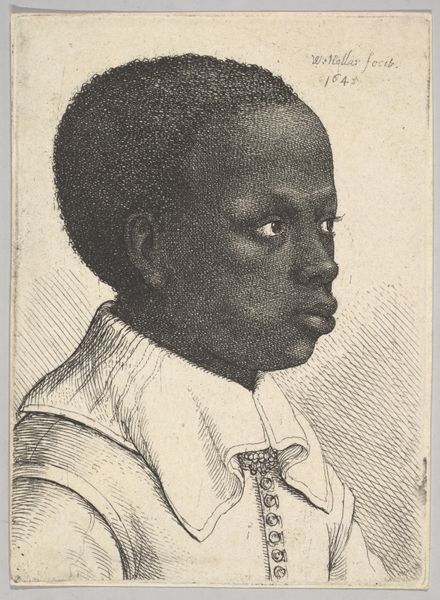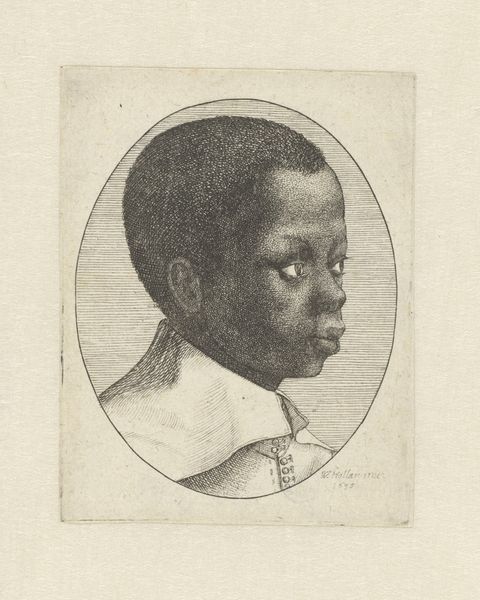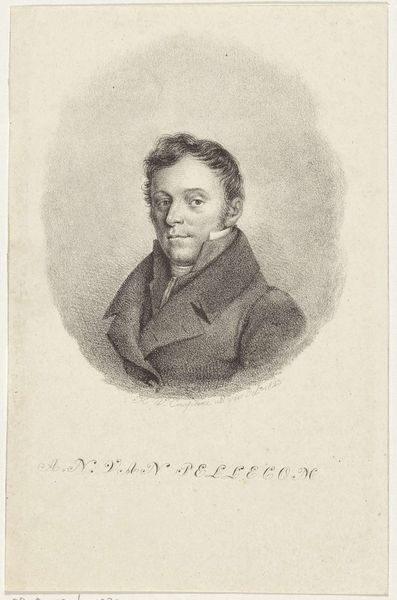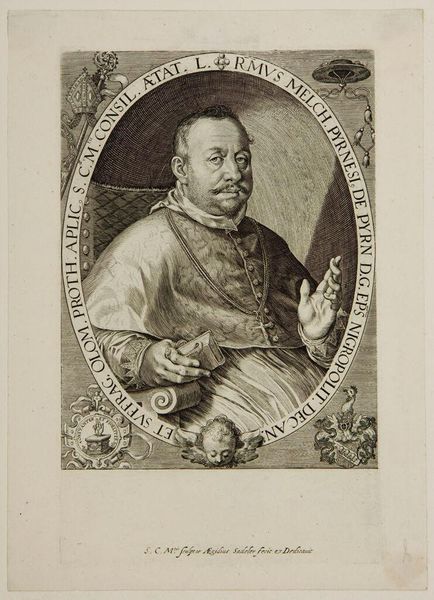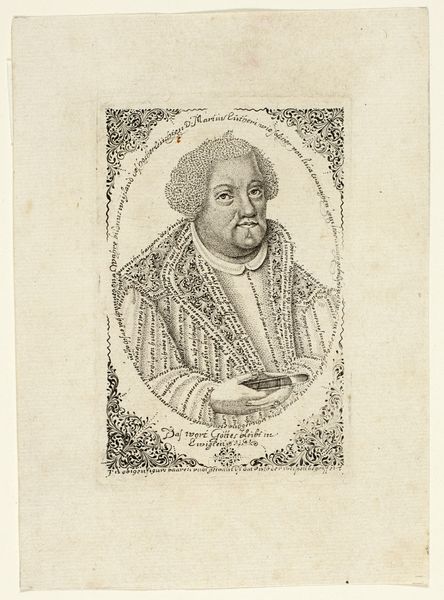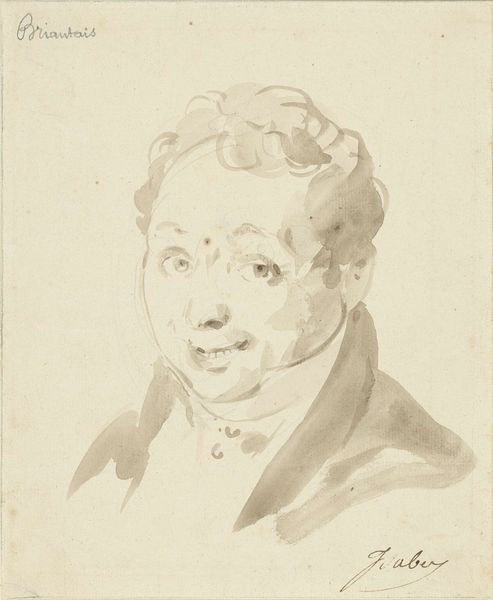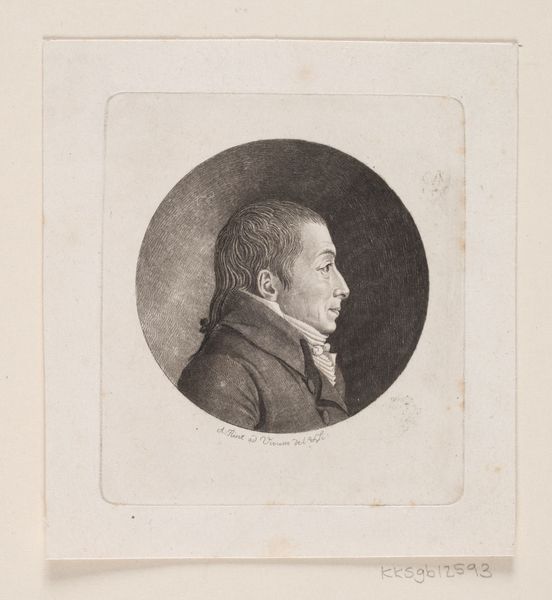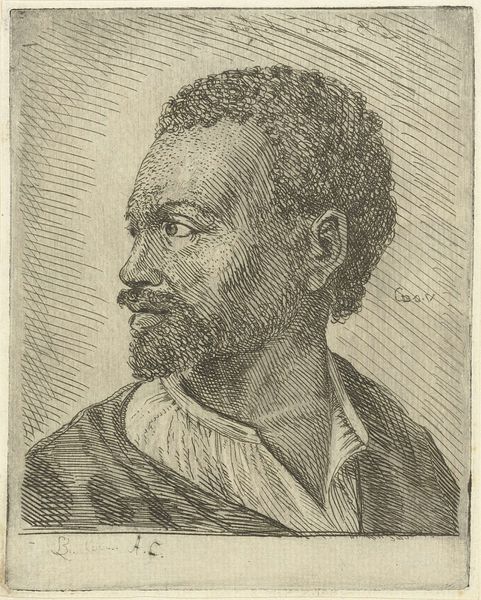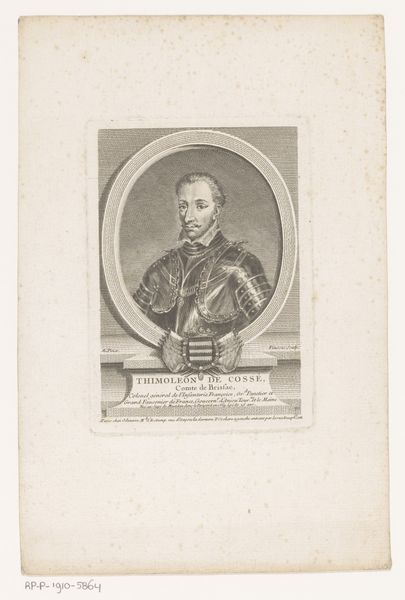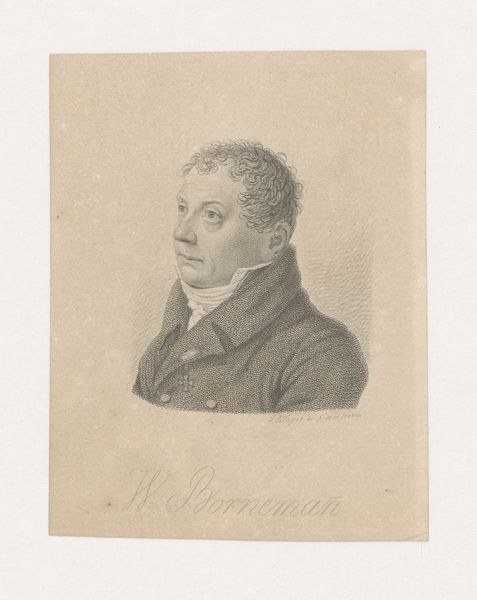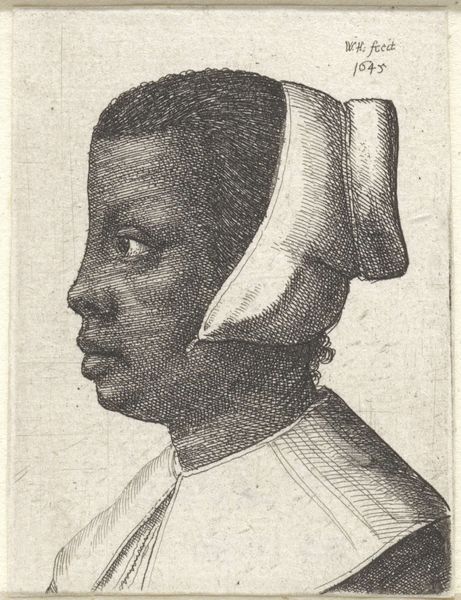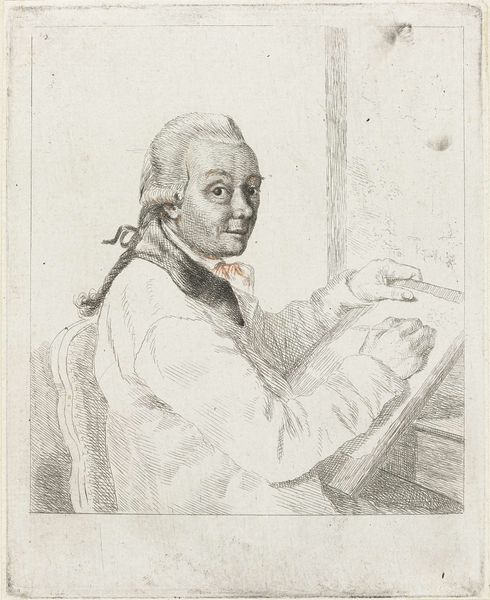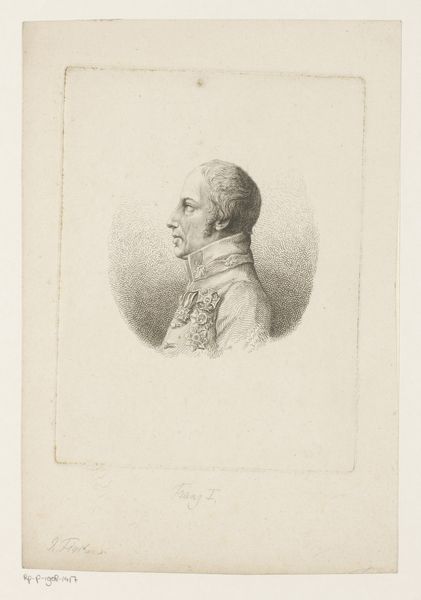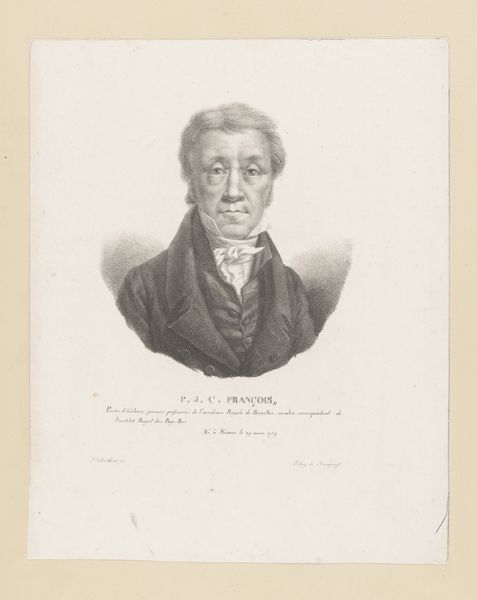
drawing, pencil
#
portrait
#
pencil drawn
#
drawing
#
facial expression drawing
#
pencil sketch
#
old engraving style
#
caricature
#
figuration
#
pencil drawing
#
romanticism
#
pencil
#
portrait drawing
#
realism
Dimensions: height 313 mm, width 246 mm
Copyright: Rijks Museum: Open Domain
Curator: Looking at this drawing, the first thing that strikes me is a certain melancholic thoughtfulness in his expression. It's quite captivating. Editor: Indeed. We’re looking at "Portret van een zwarte man," or "Portrait of a Black Man," rendered in pencil around 1818 by Jean Bernard. It's currently held in the Rijksmuseum. The soft shading creates a very intimate feeling, doesn't it? Curator: Absolutely. And consider the context. In 1818, to have a portrait of a Black man, treated with such detail and sensitivity... what statements were being made, consciously or not? This image seems to fly in the face of typical representations, and what symbolism are at play? Editor: Precisely! Portraits in this era often reinforced social hierarchies, but here, we have a Black man depicted with dignity, wearing clothing that suggests a certain social standing. The fact that he is identified solely by his race, devoid of a personal name or title, highlights the complicated power dynamics at play. Was this intended to humanize, or was he reduced to simply being a specimen? Curator: A dichotomy of the era made visually manifest! It's that tension that fascinates me. His eyes hold a knowingness that transcends the paper and time itself, yet it cannot separate him from societal definitions that may limit his character and his life experiences, right? The symbol of an introspective observer. Editor: I find it compelling how Bernard uses the medium to portray the textures – from the curl of his hair to the fabric of his jacket. Curator: A visual record, then. A historical one as well, though this image and those it depicts are laden with far more meaning than the strokes on the paper or canvas indicate by themselves. Editor: That’s an excellent point. We have to acknowledge that artistic expression exists within, and often reflects, the societal currents of its time. Curator: To understand our art, is to therefore to begin to truly understand our history. It's more than looking - it's really about seeing. Editor: Seeing through time, yes. Thanks for pointing out these aspects. It deepens my appreciation for this work and the era it reflects.
Comments
No comments
Be the first to comment and join the conversation on the ultimate creative platform.
